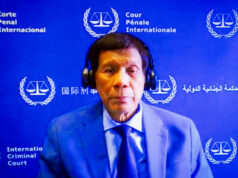WB pushes 4.5% of GDP infrastructure spending
DEVELOPING COUNTRIES like the Philippines should invest more to improve living conditions and contribute to global efforts against climate change, the World Bank said.
In its Beyond the Gap report, the multilateral lender cited the need to increase spending on key infrastructure to as much as 4.5% of gross domestic product (GDP) for low- and middle-income nations, so that they can be on track in achieving the Sustainable Development Goals (SDGs).
“Our analysis clearly shows that developing countries can build the climate-smart infrastructure they need by spending around 4.5% of GDP. The good news is this is close to what many countries already spend,” Kristalina Georgieva, interim president of the World Bank Group, was quoted as saying in a statement issued yesterday.
“With the right choices, infrastructure can be built that helps achieve globally agreed emissions targets. The focus must be on smarter and more resilient investments, not necessarily more money.”
The United Nations introduced the SDGs in 2015, setting global standards for poverty reduction and social inclusion; environmental sustainability, climate change and disaster risk management; accountable, responsive and participatory governance; fair and stable order based on international rule of law; as well as peace and security.
The World Bank study focused on policy approaches that would enable developing economies to provide universal access to water, sanitation and electricity; greater mobility; improved food security; better protection from floods; and eventual full decarbonization.
The report found that nations do not necessarily have to spend more, but will have to spend efficiently and pour equal attention to maintaining key infrastructure to maximize outcomes.
Across East Asia and the Pacific, the preferred investment scenario shows that investments for infrastructure capital must stand at four percent of regional GDP, while maintenance costs entail another 2.5% of GDP to ensure sustained quality. This covers expenses for electricity, transport, water supply and sanitation, irrigation and flood protection.
The World Bank’s recommendations include spending for renewable energy development in the interest of promoting long-term sustainability.
A separate study by the Asian Development Bank (ADB) showed that the Philippines needs to increase tax collections by at least 5.9-9.6% from 2015 to 2030 to fund increased spending for social services with the SDGs in mind.
MALPASS BACKED
In a related development, Finance Secretary Carlos G. Dominguez III threw his support behind the appointment of David Malpass as the new World Bank chief.
Mr. Malpass, who is the United States’ treasury undersecretary, is President Donald J. Trump’s nominee for the position.
This comes after the surprise resignation of ex-president Jim Yong Kim, who left the multilateral lender to take a premier post at a privately held infrastructure investment fund.
The Department of Finance said Messrs. Dominguez and Malpass talked over the phone on Thursday morning when the Cabinet official was in Osaka, Japan for joint meetings and a fresh leg of the Philippine Economic Briefing.
Under Mr. Malpass’ leadership, Mr. Dominguez said he expects the World Bank to “work closely” with the Japan-led ADB in terms of charting a global reform agenda for the Asia-Pacific.
Mr. Dominguez sits as the Philippine representative in the Board of Governors of the World Bank Group. — Melissa Luz T. Lopez



